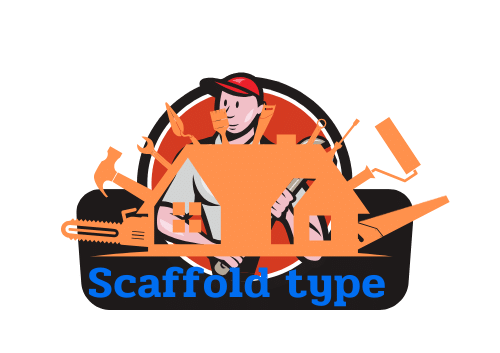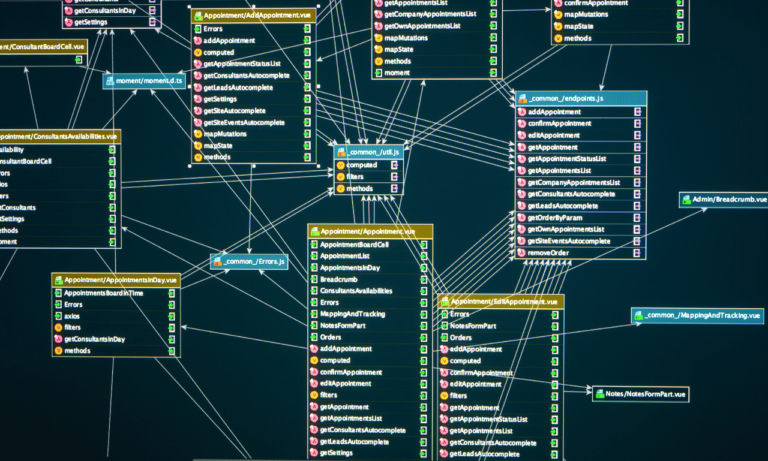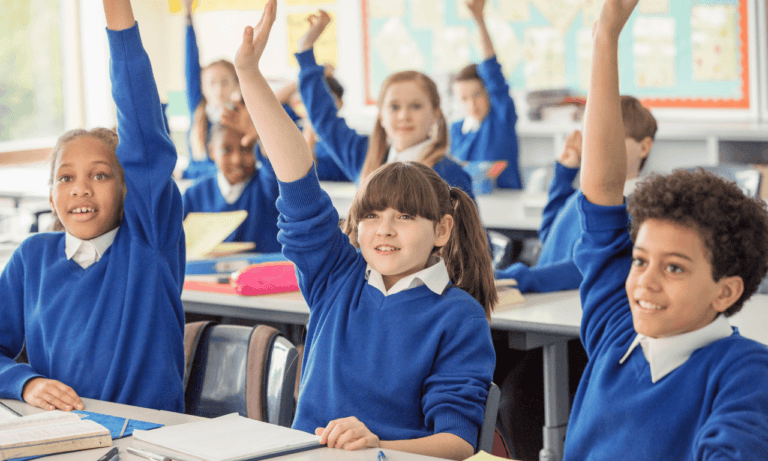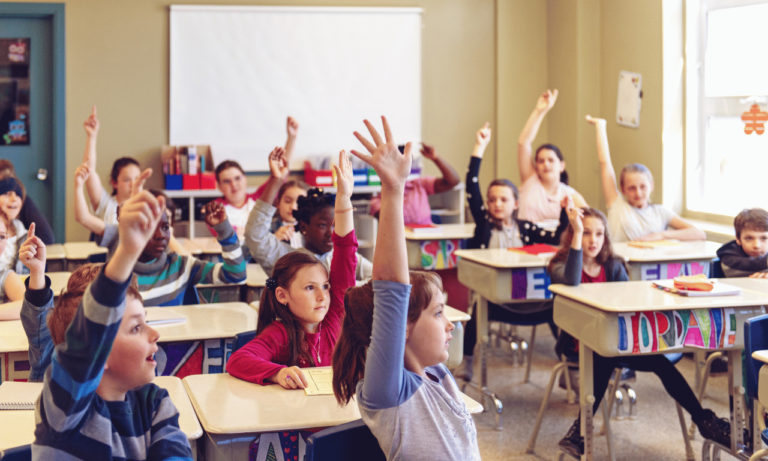Phone:
(+65)8319-0742
The educational landscape is undergoing a transformative shift with the introduction of Adaptive Teaching Methods, crafting a more personalized learning environment that prioritizes the unique needs of each student. This evolution in pedagogy highlights the importance of educational flexibility in teaching, where teachers become agile, implementing individualized instruction strategies to ensure that every lesson resonates with every learner. Incorporating personalized learning techniques and responsive teaching methodologies, educators are now better equipped to foster a supportive and inclusive classroom atmosphere that is dynamic and conducive to all styles of learning.
As education continues to adapt to the changing needs of society and the diverse capabilities of students, embracing these adaptive methods is not just innovativeâit’s imperative for creating a future where every student has the opportunity to excel. This shift ensures teaching methods are not static but vigorously evolve to meet learners right where they are, propelling them into a lifetime of successful learning outcomes.
Key Takeaways
- The necessity for educational methods that can swiftly adapt to diverse student needs.
- A student-centric approach that uses responsive teaching to improve engagement.
- The integration of individualized instruction strategies for effective teaching.
- The role of technological advancements in fostering personalized learning techniques.
- How educational flexibility in teaching empowers both educators and learners.
Understanding the Need for Educational Flexibility in Teaching
The educational sphere is dynamically evolving, reflecting a growing need for strategies like educational flexibility in teaching, which can cater to increasingly diverse student populations. More than ever, there’s a recognition that a customized curriculum approach is not just beneficial, but necessary to foster successful learning outcomes.
The Evolving Educational Landscape and Student Diversity
With classrooms becoming more varied, the impetus for educational institutions to adopt versatile teaching methods is paramount. Diversity isn’t solely about ethnicity or socioeconomic status; it encompasses different learning abilities, experiences, and preferencesâfactors that demand an intricate understanding and application of differentiated learning tactics.
Importance of Adjusting Instructional Strategies
By employing flexible teaching methods and differentiated learning tactics, educators can not only meet but exceed the needs of their students. It’s a commitment to personalizing education and aligning it with each learner’s unique pathâoffering both intellectual challenges and the necessary support to foster deeper comprehension and critical thinking.
| Traditional Approach | Flexible Approach |
|---|---|
| One-size-fits-all curriculum | Customized learning paths |
| Uniform teaching methods | Diverse instructional strategies |
| Limited student engagement | Active and participatory learning environments |
| Assessment for grading | Assessment for learning adjustment |
The ultimate goal of integrating educational flexibility in teaching and customized curriculum approaches is to cultivate a learning environment that respects and addresses the individual needs of all students while remaining committed to the highest educational standards.
The Core Principles of Adaptive Teaching Methods

At the heart of modern education lies a critical shift towards adaptive teaching methods, rooted in the idea that instructional practices must evolve to meet the varied needs of students. This evolution prioritizes responsive teaching methodologies, which bolster the learning process by continuously adapting to the intellectual and emotional rhythms of each learner.
Personalized learning techniques form an integral part of this educational paradigm, directly contributing to heightened levels of student engagement. Engaging multiple senses and acknowledging individual preferences allows for a more dynamic and inclusive classroom experience, where the focus shifts from the one-size-fits-all approach to individualized instruction strategies that resonate with each student’s learning style.
Responsive Teaching Methodologies and Their Impact on Learning
Responsive teaching methodologies are about being attuned to student feedback, both verbal and non-verbal, and using that information to steer instructional approaches. By staying vigilant and adapting in real-time, educators can ensure that students are not just passive recipients of information but active participants in their learning journeys.
Personalized Learning Techniques for Improved Student Engagement
Personalized learning techniques invigorate the educational experience by drawing upon a spectrum of approaches tailored to individual learners. Whether through group activities that cater to social learners or independent study for those who thrive in solitude, the focus remains on crafting a supportive and challenging environment for every student.
| Learning Style | Personalized Technique | Adaptive Tool |
|---|---|---|
| Visual | Infographics, charts | Interactive whiteboards |
| Auditory | Podcasts, discussions | Audio recordings |
| Kinesthetic | Hands-on experiments | Virtual labs |
| Reading/Writing | Journaling, blogs | E-books, online resources |
| Social | Peer teaching, study groups | Group learning platforms |
| Solitary | Self-paced learning modules | Personalized learning plans |
In harnessing the power of responsive teaching methodologies, personalized learning techniques, and individualized instruction strategies, we unlock a realm of educational possibilities that not only resonate with students but also prepare them for a world where adaptability is key.
Strategies for Implementing Individualized Instruction Strategies

In today’s dynamic educational landscape, the incorporation of individualized instruction strategies is a testament to the unwavering commitment to educational flexibility in teaching. To tailor the educational experience to individual learner’s needs, educators are turning to a variety of innovative differentiated learning tactics. The following outlines a pragmatic approach for educators to personalize their teaching effectively.
- Curriculum Customization: Modify existing lesson plans to cater to the learning styles and speeds of each student, ensuring that no one is left behind.
- Supportive Learning Environments: Establish a classroom atmosphere that encourages and cultivates open communication and mutual respect between teachers, students, and parents alike.
- Formative Assessment: Regularly employ assessments to gauge understanding and pinpoint areas where students may need additional support or challenge.
- Technology Integration: Use ed-tech tools to offer interactive and engaging learning opportunities tailored to individual student profiles.
Effective educational flexibility in teaching also extends to close collaboration with teaching assistants to provide additional scaffolding where necessary. Pre-teaching crucial vocabulary can propel learners towards better comprehension, while maintaining a nurturing and positive learning environment is vital for student engagement. Here’s a closer look at the strategic use of technology to foster individualized learning.
| Technology Tool | Individualized Strategy | Learning Outcome |
|---|---|---|
| Educational Apps | Interactive exercises tailored to student needs | Engagement and hands-on practice |
| Adaptive Learning Platforms | Content adapts in real-time based on student responses | Personalized pacing and difficulty |
| Virtual Classroom Forums | Space for students to ask questions and receive tailored help | Peer support and collaborative learning |
As educators refine their differentiated learning tactics, the feedback loop between teacher and learner becomes more streamlined, impactful, and productive. Implementing these strategies is not a one-size-fits-all endeavor; it demands continuous reflection and adjustment to fit the changing needs of each classroom’s unique composition. It’s a delicate balance of art and science, all for the noble end of elevating every student’s potential through individualized education.
Adaptive Teaching Methods

In today’s dynamic educational sphere, the significance of adaptive teaching methods is more prominent than ever. Educators strive to maintain responsive classroom environments by utilizing customized curriculum approaches, ensuring that every student’s unique learning needs are met.
Customized Curriculum Approaches for Diverse Classrooms
By integrating customized curriculum approaches into the academic framework, instructors tailor their lessons to embrace the diverse spectrum of learners. This methodological shift underpins the critical integration of knowledge and the creation of resources that support flexible instruction. It positions educators to establish high expectations across the board, propelling students towards their highest potential.
Differentiated Learning Tactics for Optimal Student Participation
In parallel, differentiated learning tactics ensure that instructional delivery is fine-tuned to address each student’s learning style. Such tactics foster an environment ripe for challenging stereotypes and promoting growth mindsets. The heart of adaptive teaching lies in its responsive nature, where real-time student feedback plays a pivotal role in informing teaching adjustments and promoting equitable opportunities.
The table below illustrates how adaptive teaching methods manifest through various strategies, highlighting the effectiveness of differentiated learning tactics and customized curriculum approaches.
| Strategy | Customized Curriculum Example | Differentiated Learning Example |
|---|---|---|
| Content Delivery | Using thematic units to address cross-curricular standards | Providing text at varying reading levels |
| Assessment | Offering choices in project-based assessments | Using rubrics that account for different learning styles |
| Classroom Environment | Flexible seating options to accommodate student preferences | Visual, auditory, and kinesthetic learning centers |
| Feedback | Individual learning plans with specific goals and objectives | Regular check-ins to adjust learning paths as needed |
Emphasizing inclusivity, the dedication to adaptive teaching methods ensures that all students are provided with the conditions necessary for optimal participation and engagement. The evolution of these educational practices is tantamount to a brighter, more adaptable future in learning.
Integrating Technology with Tailor-Made Pedagogical Methods
The intersection of innovative technology with tailor-made pedagogical methods is revolutionizing the educational experience. By integrating technology in classrooms, educators are not only embracing the digital era but also significantly enhancing the learning journey for their students. These digital assets, including educational websites and interactive learning applications, facilitate a range of adaptive, responsive teaching methodologies that allow instruction to morph in real-time to fit the needs of each individual learner.
What makes these techno-pedagogical tools so valuable is their inherent ability to create a learning environment that reflects the diversity of learning styles. This is where tailor-made pedagogical methods showcase their true potential. Virtual simulations, for example, can transform a theoretical concept into an immersive experience, accommodating those who learn best through doing. Educational technology thus supports diverse cognitive processes and ensures that no student is left behind due to a one-size-fits-all approach.
Incorporating responsive learning platforms and online assessments enables ongoing evaluations of student progress which, in turn, allows educators to fine-tune their strategies promptly. The value of integrating technology lies not only in the facilitation of innovative ways of engagement but also in fostering a more inclusive and dynamic educational ecosystem. By staying at the forefront of these developments, educators are uniquely positioned to craft cutting-edge, responsive teaching methodologies that resonate with, inspire, and support every student’s journey towards academic success.
FAQ
What Are Adaptive Teaching Methods?
Adaptive Teaching Methods are student-centered instructional strategies designed to meet the diverse learning needs of students. By employing personalized learning techniques, individualized instruction strategies, and responsive teaching methodologies, educators can create a flexible and dynamic learning environment that supports all students.
Why Is Educational Flexibility Important in Teaching?
Educational flexibility is critical to address the varied abilities, learning styles, and backgrounds of students. By using customized curriculum approaches and differentiated learning tactics, teachers can adapt their instruction to provide the most effective learning experience, ensuring that all students have the opportunity to succeed.
How Do Responsive Teaching Methodologies Impact Learning?
Responsive teaching methodologies allow educators to adjust their teaching in real-time based on student feedback and progress. This approach ensures that instruction is continuously adapted to the learning pace and preferences of each student, leading to improved engagement, deeper understanding, and better overall academic outcomes.
What Personalized Learning Techniques Can Improve Student Engagement?
Personalized learning techniques involve understanding individual student profiles, including their preferred learning modalities like visual, auditory, and kinesthetic styles. Additionally, employing technology and interactive activities can greatly enhance engagement by providing relevant and captivating learning experiences tailored to each student’s interests.
What Are Some Effective Individualized Instruction Strategies?
Individualized instruction strategies might include differentiated assignments, scaffolded supports, flexible grouping, and one-on-one coaching. Teachers can also use formative assessments to guide instructional planning and provide immediate feedback, ensuring that each student’s unique learning needs are addressed.
How Can Customized Curriculum Approaches Benefit Diverse Classrooms?
Customized curriculum approaches allow educators to design lessons that cater to a wide spectrum of learners. By differentiating content, process, product, and learning environment, teachers can meet students where they are, providing multiple paths to understanding and accommodating different learning needs and preferences.
What Are Differentiated Learning Tactics?
Differentiated learning tactics involve modifying instruction to cater to each student’s learning level and style. This includes providing various types of content, utilizing multiple teaching methods, and offering choice in assignments. The aim is to challenge all students appropriately and support their individual growth.
How Does Integrating Technology Support Tailor-Made Pedagogical Methods?
Technology supports tailor-made pedagogical methods by providing diverse and interactive learning experiences that can be customized for each student. Digital tools, such as adaptive learning software, educational apps, and online resources, enable educators to offer personalized content that aligns with each student’s learning trajectory and needs.

Empowering Learning with Collaborative Educational Framework
The landscape of education is undergoing a revolutionary change with the introduction of the Collaborative…

Work at Height Standard: Safety Guidelines Explained
Working at height means doing a job where you could fall and get hurt. In general industry, the Occupational…

Efficient Drone Inspection Software Solutions
Reduce risk, increase efficiency, and improve quality with Skylineâs virtual inspection solutions….

Stair Scaffold Solutions for Safe Work Access
In the world of construction and maintenance, ensuring safe and efficient work access is paramount. When…

Industrial Scaffolding Solutions & Services
Welcome to our comprehensive guide on industrial scaffolding solutions and services. In the field of…
No posts found

















